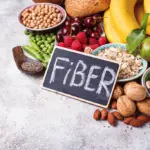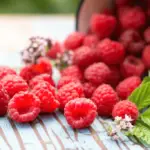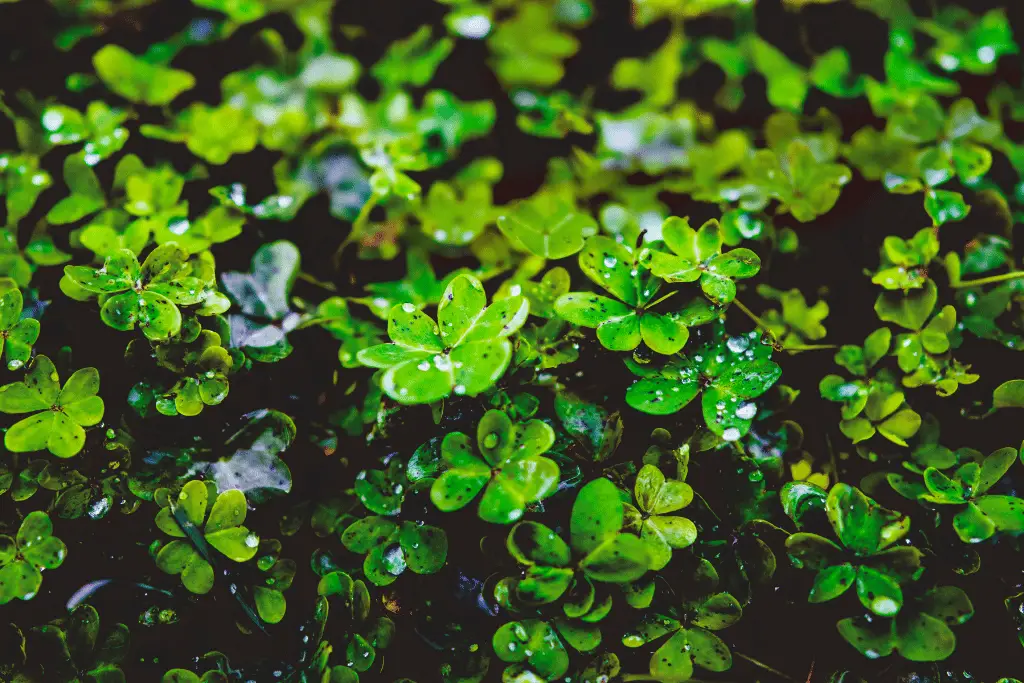
Clover is a versatile cover crop and green manure that can provide many benefits to your garden or farm. Determining the optimal time to plant clover depends on your climate, the variety you select, and your goals. By understanding clover’s growing habits and your local conditions, you can ensure successful establishment and growth.
Spring Planting
Spring is a popular time to plant clover in many regions. The mild temperatures and plentiful moisture of spring help clover seeds germinate and seedlings establish.
Cold-Hardy Varieties
Many clover species can tolerate frosts and colder temperatures, making early spring planting an option. White Dutch clover, crimson clover, red clover, and sweet clover are quite cold hardy. Even after germinating, young plants can withstand light freezes and temperatures down into the 20s Fahrenheit (-6 to -7 Celsius). Planting these clovers 4-6 weeks before your last expected frost date will give them time to become established before warm weather arrives. The roots will develop through any cold snaps, allowing the clover to thrive when temperatures warm. Just make sure the ground is workable before planting.
When is the Best Time to Plant Clover?
More tender clover varieties like berseem and Persian prefer warmer soil temperatures for germination and growth. Wait until daytime highs reach 65-70°F (18-21°C) and the soil has warmed. Planting too early increases the risk of poor germination, diseases, and frost damage. Berseem clover does best when planted after the danger of frost has passed. Aim for soil temperatures around 70°F (21°C) for optimal results. Persian clover also prefers consistently warm spring temperatures. Target late spring after you’re past the last expected frost. No matter the variety, spring planting allows clover time to become established before hot summer weather arrives. The roots develop through the mild days of spring, helping the clover tolerate dry conditions later on. Spring growth also gives clover time to provide nitrogen fixation, weed suppression, and soil organic matter additions that benefit summer cash crops.
Summer Planting
Summer planting of clover is ideal in cooler regions with adequate moisture. The goal is to avoid hot, dry conditions that stress young clover plants. Northern states and Canada often see clover planted in early to mid-summer.
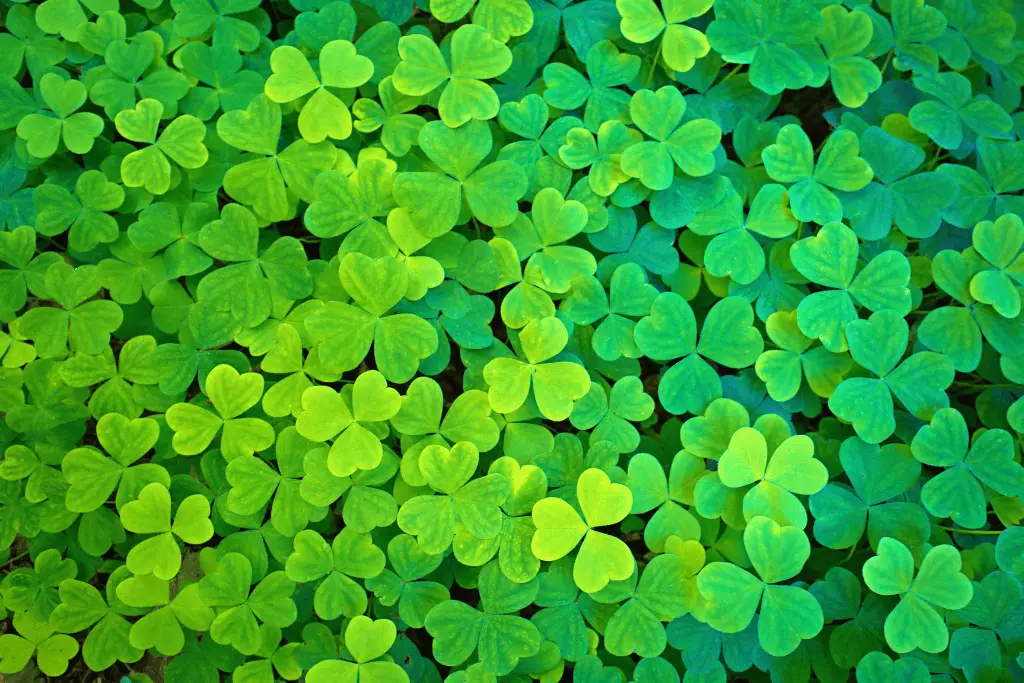
After Early Crops
One approach is planting clover after harvesting spring vegetable crops. Cultivating and replanting that area with clover utilizes empty garden space. It builds soil health over the summer in time for fall crops or next year’s planting. White Dutch clover and red clover grow well when planted in July or August in these cooler climates. The clover matures and develops roots through the fall, fixing nitrogen even after frost. It winterkills, leaving a nitrogen-rich soil cover. Interseeding clover between crop rows also works in mid-summer. For example, planting clover between corn, bean plants, or other vegetables takes advantage of available space. Just be sure to reduce competitive weeds first.
For Fall Growth
Further south, planting clover in early fall allows establishment and growth before cold weather arrives. Red clover, white Dutch clover, and crimson clover are good options for overseeding pasture, lawns, or cover cropping empty garden beds. This late summer/early fall planting timing works well in southern states like Georgia and Texas. Germination improves as temperatures cool down. Weed pressure is reduced as well. The clover grows moderately through fall and goes dormant over winter. Areas with mild winters may see clover continue growing through winter. Then it revs up strongly in spring with its developed root system in place.
Fall Planting
In warmer regions, fall is an ideal planting window for clover. Many types will germinate well with the cooler, moist conditions. Weed competition is reduced in fall as well.
After Summer Crops
Planting clover in the fall is a perfect cover crop option after finishing summer vegetable crops. Spaces that were occupied by tomatoes, peppers, squash, beans, and other warm season plants can be planted with clover. Red clover and crimson clover are two excellent choices for fall planting in zones 8, 9, and warmer. Both germinate well in the cooling temperatures and can grow moderately through winter. This provides soil protection and begins adding organic matter. Cover cropping with clover also works well after corn, soybeans, rice, and other summer cash crops are harvested. Clover seeds can be broadcast across the stubble, providing soil health benefits over winter. The clover may winterkill or persist into spring depending on the variety and climate.
Early Fall Best
Target September or October for the ideal fall clover planting window. This gives the seeds enough warm soil to germinate well but cooler air temperatures to grow strongly. The clover establishes before cold weather arrives but has time to develop roots. In southern zones 8-10, clover can be planted as late as November or December and still establish if moisture is adequate. But earlier fall planting gives clover more time to grow and provide benefits. Persistence through winter varies. Annual crimson and Persian clovers may winterkill while white Dutch and red clover are more likely to persist. If the clover survives, it greens up quickly in spring to fix nitrogen and build organic matter through the growing season.
Winter Planting
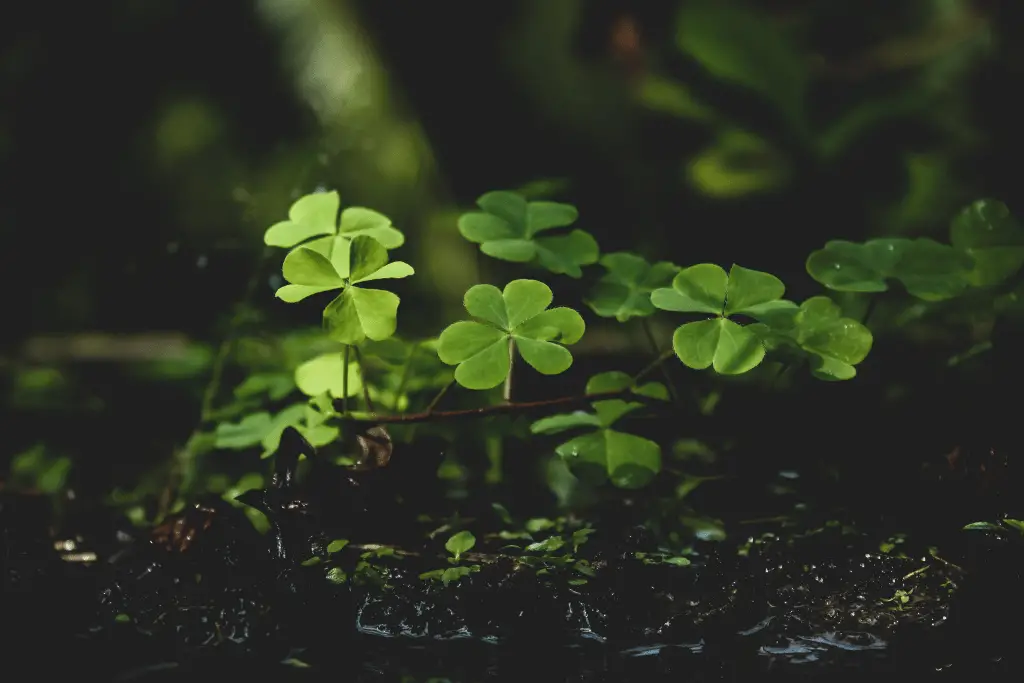
Trying to plant clover in the middle of winter is difficult if not impossible in many climates. The ground may be frozen or snow-covered, preventing you from sowing seeds effectively. Low soil temperatures inhibit germination as well. However, planting clover in late fall to early winter can work in some warmer regions. Parts of California, Gulf states, and the southeastern U.S. see winter planting done with success. The best candidates are frost-tolerant clovers planted 6-8 weeks before the typical last frost date. White and red clover grow well when planted in zones 7-9 during late fall through early winter. Target December-February for good results. The clover germinates when cool rains arrive and the soil thaws. It then establishes and grows with warming spring temperatures. Weed competition is low, and soil moisture is usually optimal. Just beware of any late cold snaps.
Key Tips for Planting Clover
Regardless of timing, following some important best practices will help ensure the clover germinates well and thrives:
- Prepare a fine, firm seedbed free of weeds and debris. Clover seeds are small and require good contact with soil.
- Inoculate clover seed with the proper rhizobium bacteria for optimal nitrogen fixation.
- Pay close attention to seeding depth – 1/4” for small seeds, 1/2″ for large. Don’t bury too deep.
- Maintain consistent soil moisture after planting to aid germination and establishment.
- Control competitive weeds, especially grasses, while clover establishes.
- Fertilize based on soil test recommendations to provide sufficient phosphorus and potassium.
With the right planting approach for your climate, clover can thrive and provide a range of soil and crop benefits. Proper timing and care in planting will ensure success with this multifunctional crop. Adjusting your planting window based on weather variations each year will keep clover growing strong season after season.
When to Choose Each Clover Type
With many clover species and varieties to pick from, it’s important to choose the right one for your goals, region, and planting timeframe. Here are some top clover types and when they are best planted:
Red Clover
Red clover grows well when planted in spring or fall in zones 4-9. It prefers cooler temperatures and appreciates ample moisture. Use it as a cover crop, green manure, livestock forage, or living mulch. Red clover is best suited to rotation with grains, corn, and grass crops.
White Dutch Clover
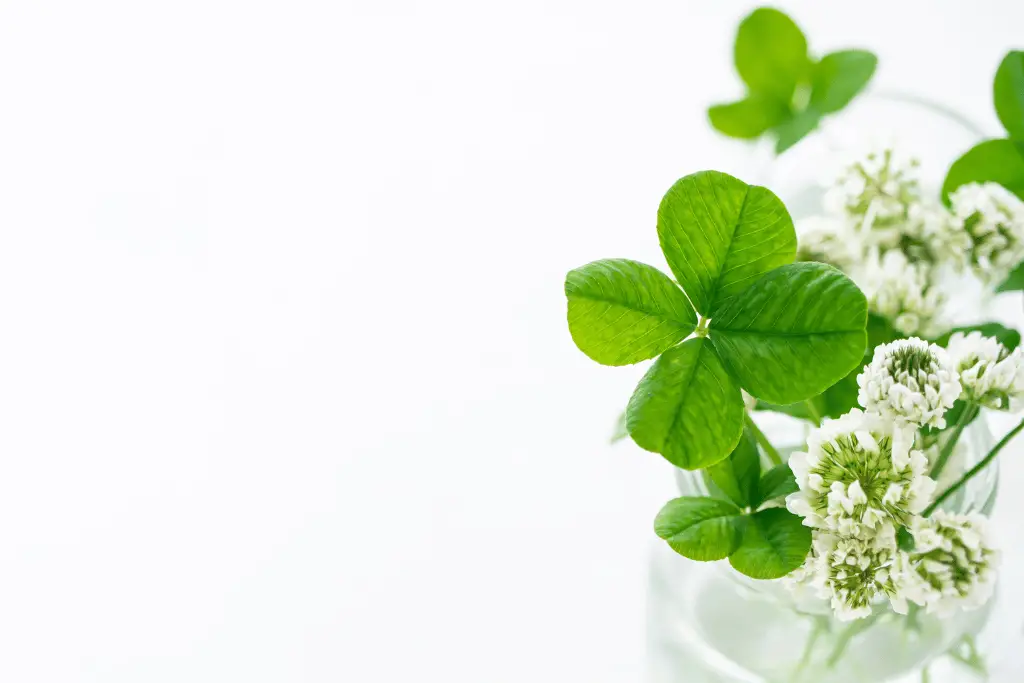
Offering good persistence, white Dutch clover can be planted spring through fall in zones 4-9. Its tolerance of shade and a range of soils makes it extremely versatile. Use it as a living mulch, erosion control, lawn substitute, forage, or green manure crop. It works well rotated with vegetables and herbs.
Crimson Clover
A reseeding annual, crimson clover is ideal for fall planting in zones 7-10. It thrives when sown after summer crops are harvested and will winterkill in colder zones. Use it as a nitrogen-fixing cover crop and to build organic matter. It pairs well ahead of warm season vegetables and herbs.
Berseem Clover
Best planted in spring once soils have warmed, berseem clover grows well in zones 7-11. It prefers fertile, well-drained soils. Quick growing, it provides abundant biomass for plowing under to improve soil. Use it in open fields ahead of summer crops like corn, melons, and squash.
Sweet Clover
Known for its deep taproot, sweet clover can be planted in spring or fall in zones 3-8. It’s an excellent choice for improving poor, compacted soils. Use it as a cover crop, livestock forage, or green manure. Sweet clover does best when rotated with field crops like corn, soybeans, and cereals.
Persian Clover

Persian clover grows well when fall planted in zones 7-10. Its shallow root system makes it easy to incorporate. Use it as a reseeding annual cover crop or living mulch. Plant it after harvesting summer crops or between crop rows. It pairs well with vegetables, herbs, and strawberries.
Clover Planting Considerations by Region
The ideal timing and methods for planting clover can vary significantly across different climates. Here is a closer look at key planting factors by region:
Cool Northern Climates (Canada, Northern U.S.)
- Plant cold-hardy red, white, and sweet clovers in early spring once soils thaw.
- Also plant these species in early fall after summer crops finish.
- For fall planting, choose earlier maturing cultivars that can establish before winter.
- Avoid planting tender clovers like berseem and Persian – these won’t persist through winter.
- Nurse cropping can help clover establish in cool conditions with grains like oats or rye.
- Look for disease-resistant, northern-adapted clover cultivars best suited to the climate.
Hot Southern Climates (Southern U.S., Mexico)
- Time early fall planting of crimson, red, white, and Persian clovers to allow establishment before warm conditions end.
- Persian and berseem clover grow well when spring planted after danger of frost.
- Plant clovers as winter cover crops in December-February in warmer zones 8-10.
- For summer planting, select heat-tolerant varieties bred for southern performance.
Coastal Cool West (California, Pacific Northwest, British Columbia)
- Optimal planting time is fall through early winter in November-February.
- Colder inland areas plant clover in early spring once soils thaw and dry out.
- Red and white clover grow well across the region; berseem and Persian clover also do well in warmer zones.
- Fog and mist along the coast supply needed moisture – reduce irrigation further inland.
- Later winter plantings timed for spring rains can work but weed competition may be high.
Humid Continental Climates (Midwest, Northeast, Mid-Atlantic)
- Spring and early summer planting is ideal after harvesting spring crops.
- Early fall planting ensures clover establishes before winter dormancy.
- Annual crimson clover offers the quickest growth when planted in fall.
- Use clover as a winterkilled cover or green manure ahead of summer crops.
- Red and white clover persist longer than annuals; avoid overly wet soils.
Transition Zone (Ozarks, Appalachians, Central California Valley)
- Time plantings for spring rains in March-April or fall rains in September-October.
- Match clover variety to the microclimate – some areas support cooler season species better.
- Annual crimson and Persian clovers work well as winter annuals.
- Use clover as a summer or winter cover crop and soil builder around crops.
Irrigation is key, especially for summer plantings to establish before hot, dry periods.
Methods for Planting Clover
Proper planting techniques help ensure clover seeds have good contact with the soil for successful germination and establishment. Use these effective planting methods for your clover:
Broadcast Seeding
One of the simplest ways to plant clover is broadcasting the seed across the soil surface. This allows wide distribution without specialized equipment. For best results:
- Prepare a clean, weed-free seedbed and break up any soil crusting.
- Apply seed at the recommended rate. Divide large areas into sections for even coverage.
- Gently rake or harrow seeded areas to incorporate seed into the top 1/4 inch of soil.
- Roll or pack the area to ensure good seed-soil contact.
- Water gently to moisten the seed zone without washing seeds away.
Broadcast seeding works well for larger clover planting areas like cover crop fields, lawns, and pastures. Follow up with proper irrigation and weed control.
Row Seeding
For planting clover in garden rows, a push seeder makes the process quick and efficient.
- Set the seeder to the proper spacing and depth per clover variety.
- Check frequently that the seed drop is consistent without blockages.
- Clearly mark planted rows to identify location later.
- Gently tamp down each seeded line to improve contact.
- Use row seeding for dedicated clover strips between crops, along contours for erosion control, and in garden pathways.
Interseeding
Interseeding allows clover planting between established crops.
- Time planting when companion crop leaves space below for light penetration.
- Use a broadcast seeder or spreader for good coverage between rows/plants.
- Seed at slightly higher rates than normal to account for competition.
- Gently rake or harrow once if able to cover seed without damaging main crop.
- Interseed clover into veggies, field crops, orchards, berries, and vineyards for beneficial integration.
Overseeding
Similar to interseeding, overseeding plants clover into existing vegetation.
- Aerate lawn, pasture, or hayfield first to seed into soil.
- Mow closely before seeding for direct soil contact.
- Broadcast seed, increase rate slightly.
- Top dress with 1/4″ compost to cover seed and provide fertility.
- Overseed clover into thin grass stands to boost forage quality, nutrition.
- Overseed garden beds between crops to build organic matter and smother weeds.
Frost Seeding
Where winters bring freezing and thawing:
- Spread seed over snow-free areas in late winter.
- Clover seeds naturally work into soil as it heaves and settles.
- Effective for dormant lawns, pastures, and hayfields with open areas.
- Red and white clover work well. No need to rake or incorporate seed.
- Natural freeze/thaw provides moisture; irrigation not required.
Optimizing Germination and Establishment
Following planting, proper care ensures your clover gets off to a vigorous start. Focus on these key factors:
Soil Moisture
Consistent moisture is vital for clover germination and emergence.
- Water seeded areas immediately after planting and keep moist until sprouting.
- Maintain even moisture in the top 1-2 inches where seeds are germinating.
- Avoid excessively wet soils that lead to seed rotting.
- Once seedlings emerge, gradually reduce watering frequency as roots develop.
Weed Management
Competition from weeds can significantly hamper clover establishment.
- Remove existing weeds through cultivation before planting clover.
- Use mulch around seeded areas to suppress new weeds.
- Hand pull emerging weeds, being careful not to disturb clover seedlings.
- Mow broadleaf weeds as needed but avoid mowing young clover plants.
- Apply herbicide if necessary before clover emerges or after established; avoid weed seed germination.
Proper Fertilization
Clover needs adequate fertility to thrive. Too much can encourage weed competition.
- Test soils and apply lime if pH below 6.0; target 6.5-7.0.
- Band phosphorus and potassium based on soil test recommendations to ensure sufficient levels.
- Topdress new plantings with compost or organic fertilizer to support growth while avoiding burn.
- Foliar feeding offers gentle fertilization to young plants; use dilute fish emulsion or compost tea.
Overseeding/Nurse Cropping
Companion planting can facilitate clover establishment.
- Frost seed clover into grass stands for support and reduced competition.
- Use short season nurse crops like oats or wheat that establish quickly but leave space for clover growth.
- Overseed into thinning alfalfa for eventual stand conversion as it declines.
- Interseed into well-managed vegetable crops for protection while clover establishes.
Clover Planting Tips and Tricks
Follow these handy tips and tricks for successful planting and establishment of clover:
- Inoculate seeds with proper rhizobium bacteria for nitrogen fixation.
- Mix in 5-10% inert material like rice hulls or vermiculite when broadcast seeding for even application.
- If broadcasting by hand, divide area into sections and mark off when completed to ensure even coverage.
- When using seeders, clean out equipment between clover varieties to prevent cross contamination.
- Cover seeded plots with bird netting if poultry or wild birds are a problem.
- Mow existing sod, pasture, or alfalfa very short before no-till planting clover using a slicer-seeder
Orchestrating a Year-Round Clover Symphony
In the grand narrative of clover care, each season plays a unique role, contributing to the resilience and vitality of this versatile plant. Spring heralds the awakening and germination, summer challenges with heat and weeds, autumn sets the stage for dormancy, and winter offers a period of rest and preparation. The best time to plant clover is not confined to a single season; rather, it spans the orchestration of the entire year. By understanding the nuances of each season and adapting care practices accordingly, you can create a landscape where clover thrives year-round, contributing to soil health, biodiversity, and the aesthetic charm of your surroundings. May your journey with clover be guided by the wisdom of seasons, the patience of a caretaker, and the joy of witnessing this resilient plant flourish under your attentive stewardship. Happy clover planting!

